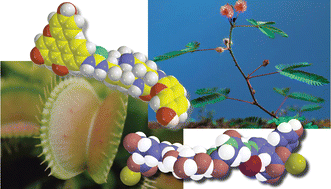Metabolites involved in plant movement and ‘memory’: nyctinasty of legumes and trap movement in the Venus flytrap
Abstract
Covering: the literature up to 2006
The bioorganic basis of plant movement in two plant systems is described in this article: the circadian rhythmic leaf movement known as nyctinasty and trap movement in the Venus flytrap. The bioactive substances responsible for plant movement, the chemical mechanism of the rhythm, and studies on the key


 Please wait while we load your content...
Please wait while we load your content...